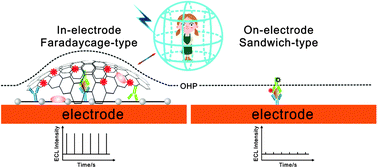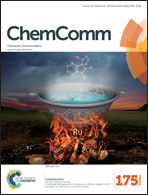In-electrode vs. on-electrode: ultrasensitive Faraday cage-type electrochemiluminescence immunoassay†
Abstract
A new-concept of an “in-electrode” Faraday cage-type electrochemiluminescence immunoassay (ECLIA) method for the ultrasensitive detection of neurotensin (NT) was reported with capture antibody (Ab1)-nanoFe3O4@graphene (GO) and detector antibody (Ab2)&N-(4-aminobutyl)-N-ethylisoluminol (ABEI)@GO, which led to about 1000-fold improvement in sensitivity by extending the Helmholtz plane (OHP) of the proposed electrode assembly effectively.


 Please wait while we load your content...
Please wait while we load your content...